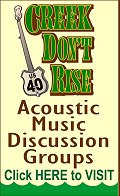 Tweaking the Appalachian and Bluegrass |
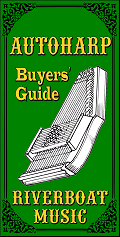 |
|
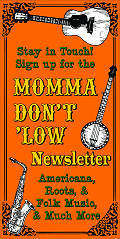

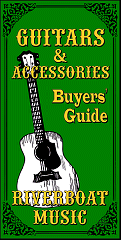
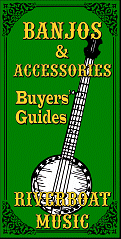
| Tweaking the Appalachian and Bluegrass Editor's Note: This article refers to the early 15-chord Oscar Schmidt "Appalachians" and the Chromaharp "Bluegrass," both of which have been discontinued since the 1970s. They were supposed to be more "Folk-Friendly" than the standard fifteen-chorders, and they did add A major, which allowed you to play three-chord songs in A. But the chord bars were arranged in such a way that was awkward for playing in D, a popular Fol and Country key at the time. This article simply identifies one way you can make either autoharp more playable.About 1963, Oscar Schmidt director Glen Peterson recognized that the autoharp was being virtually ignored by both Folk and Bluegrass bands. Company personnel interviews well known string-band and Folk artists to learn how to fix that. (At that time, only 15-chorders were being built, so that's where they started.) The result was the original Oscar Schmidt OS45, which replaced the Eb and F7 chords with A and E major, enabling the instrument to play in A. Unfortunately, the corporation was hesitant to disturb the "basic 12" chord setup that had been used for 12- and 15-chorders for 76 years. So they sqoze the D, A, and E chords out on the 'left' end of the chord bar row, so playing in D or A was pretty awkward.
That didn't keep Chromaharp from adding a similar instrument to their arsenal eventually and calling it "The Bluegrass." To the right is an advertising sheet that was included in music store catalogs "back in the day." In the blowup, you can make out that these were manufactured by Sekova, a respected Japanese manufacturer. I have now owned the "Bluegrass," and two iterations of the Oscar Schmidt OS45, and I have to say that the Chromaharp copy has nothing to be ashamed of. Frankly, it's more solid that the Oscar Schmidt 15-chorders that are being built today. Note: This article does not apply to 99% of the Chromaharps and Autoharps out there. Only to three specific models: The Chromaharp Bluegrass and the 15-chord Oscar Schmidt Appalachians OS45, OS45B, and OS45BH with the round holes. (The OS45B with the flower-shaped hole is NOT the same. It looks way cool, but it has Eb and F7 just like 99.9% of the 15-chorders out there. More Polka-friendly than Folk- or Bluegrass-friendly, I'm afraid.)
Ergonomic ReconfigurationTo make it possible to play in D without developing carpal tunnel syndrome or something, I decided to move the D, A, and, and E as far as I could to the other end of the chord bar arrangment.Loosening the chord bars is just a matter of removing the three microscopic screws that hold down the ends of the chord bars. Do this on a solid surface over a hardwood floor. Generally the springs on these older autoharps won't jump out when you loosen the chord bars, but you don't want to have to search for one in shag carpet if one gets away from you. At first I was only going to move certain chord bars, then I decided to make the instrument as intuitive as possible, given its limitations. One of its limitations is that the chord buttons can't be removed from the chord bars without potentially breaking something. So, if, say, A major started out in the upper row of buttons, it was going to stay in the upper row of buttons, because I didn't want to get that crazy with my rebuild. Another limitation is that the upper-row and lower-row chord buttons have to alternate to keep the thing playable. So, for example, I couldn't put A major and E7 adjacent to ech other.
Purists might complain that the E7 chord bar should be closer to A major than the E major chord bar. But because of the way the chord name buttons are glued onto the chord bars, the E7 couldn't go next to the A. Yes, it's not the chord arrangement your grandmother used, but it's much more intuitive. What About E Minor?Only one problem. A LOT of songs in G (and some in C and D) really need Em. One of my readers has the same harp, but the E was accidentally configured for Em in the factory, and he liked it. After playing with the harp in its new configuration and deciding it was good, I realized what he meant about the Em being necessary. On this harp, it made more sense to reconfigure the E7 as an Em. For one thing, it was already in the row with the other "relative minors." I popped out the E7 chord bar. Then I marked the felts where the G should be and cut out little cubes there to "unmute" the G strings. Then I glued the little cubes where they would mute the G# strings. This gave me one extra cube from over string 8. That's a G natural that for some reason is never open in factory-built Em chord bars but sounds fine to me. I glued that cube over string 14, which is a D note that is the 7th. That made the lower notes of the chord sound like Em instead of Em7 though there is still a 7th up on string 24. (In retrospect, I should have left that G natural on string 8 muted - it creates overtones that clash with some of the higher notes. Next time I have it open) If you have bought felt or salvaged felt from another project, of couse, you have more flexibility. So far the "carpenter's glue" I used seems to be holding well. And I can play "Country Roads" and a lot of other songs the way God intended.
| ||||||||||||||||||||||||||||||||||||||||||||||||||||||||||||||||||||||||||||
|
All material, illustrations, and content of this web site is copyrighted ? 2001, 2002, 2003, 2004, 2005, 2006, 2007, 2008, 2009,
Note: Creek Don't Rise (tm) is Paul Race's name for his resources supporting the history and music of the North American Heartland as well as additional kinds of acoustic and traditional music. For questions, comments, suggestions, trouble reports, etc. about this page or this site, please contact us.
|
|||||||||||||||||||||||||||||||||||||||||||||||||||||||||||||||||||||||||||||||
